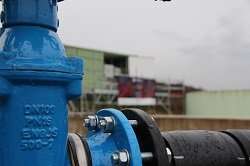
Municipal wastewater treatment in Europe consumes the energy equivalent of around two power stations per year – but could actually be generating the energy of 12. The EU-funded POWERSTEP project demonstrates how to make this more than a pipe dream.
Whilst much of the European wastewater treatment industry, with incremental energy efficiencies, is looking to achieve energy neutrality – where treatment generates the same amount of energy as it consumes – research indicates that the level of ambition could be much higher.
Studies point to the fact that processing sewage at treatment plants could already offer a new source of renewable energy, without compromising performance. In fact, it has been calculated that the potential chemical energy contained within European municipal wastewater is about 87 500 GWh per year.
The EU-funded POWERSTEP (Full scale demonstration of energy positive sewage treatment plant concepts towards market penetration) project set out to show just how it is possible to achieve energy-positive wastewater treatment plants without any other external renewable energy sources, by only using the power of sludge.
The overall POWERSTEP concept could be achieved, drawing on lessons from six full-scale case studies, spread across four countries, of each essential process step. Benefiting from the involvement of industry partners, the project was able to move to large scale demonstrations, paving the way to quick market roll-out and supporting the business plans of participating technology providers.
Integrating technologies
POWERSTEP was set up to integrate the various individual technology assessments developed in the case studies pre-dating the project. This enabled the researchers to streamline whole processes such as treatment scheme modelling and design, global energy and heat management, carbon foot printing and integrated design options.
The key first stage of the POWERSTEP wastewater treatment plant concept for enabling energy-neutrality, or even energy-positivity, is carbon extraction. The extraction of carbon rich sludge (with an 80 percent extraction rate possible using POWERSTEP technology) allows a strong increase in biogas production.
In terms of improved treatment methods towards this end, the team investigated enhanced carbon extraction (pre-filtration), innovative nitrogen removal processes (such as advanced control, main-stream deammonification, duckweed reactor), power-to-gas (biogas upgrades) with a smart grid approach, heat-to-power concepts (thermoelectric recovery in combined heat and power units, steam rankine cycle, heat storage concepts) and innovative process water treatment (nitritation, membrane ammonia stripping).
As Dr. Christian Loderer explains, “Across the EU, wastewater energy self-supply – that is biogas production for electricity production – is at very different levels. In some countries such as the Netherlands and Germany, self-supply is high but not reaching the energy-neutrality of 100 percent (except in very few cases). Other countries, especially in Eastern Europe, have very low self-supply, missing 50-80 percent of the energy-potential of their wastewater.”
This highlights the fact that there are a number of barriers to be overcome. One is that biogas from water treatment is currently not yet accepted as a quality renewable energy, in comparison with biogas from energy crops. This is despite the negative side-effects of biogas from crops such as the creation of corn mono-cultures, excessive fertiliser application and nutrient release into the aquatic environment. Conversely, biogas from sewage sludge does not have these negative side-effects.
Contributing to the circular economy
POWERSTEP, with its practical examples of how to best produce renewable energy from wastewater, significantly contributes to EU efforts towards transitioning to the circular economy, guided by ambitions for sustainability across society, the economy and the environment. This fact was recently underlined by the Director-General of the European Commission’s DG Energy, Dominique Ristori, who described POWERSTEP as, “extremely well placed when considering the priorities of the Energy Union.”
Furthermore, with the electricity to run treatment plants costing around EUR 2 billion per year, the savings could be pronounced. Dr. Loderer contends that if municipalities were to follow the POWERSTEP approach, EU citizens would also directly benefit with reduced energy bills.
“Energy-neutral wastewater treatment is not illusionary anymore, we have shown that it is absolutely possible now with commercially available state-of-the-art technologies,” as Dr. Loderer says. And with the Altenrhein Waste Water Treatment Plant in Switzerland now equipped with a full-scale Nitrogen-recovery unit, which had been studied in detail by the POWERSTEP partner EAWAG, momentum is literally building.
Looking to the future Dr. Loderer adds that, “Energy-positive treatment, up to 140-170 percent, is also possible but still requires more work on technology reliability and economic viability, for full-scale systems to be rolled out.”
In the immediate term, as a proof of concept showing that the technology works for the small as well as large scale, the team is in discussions with key industrial partners from the project on how to establish a network of small wastewater treatment plants which will partly implement POWERSTEP approaches.
